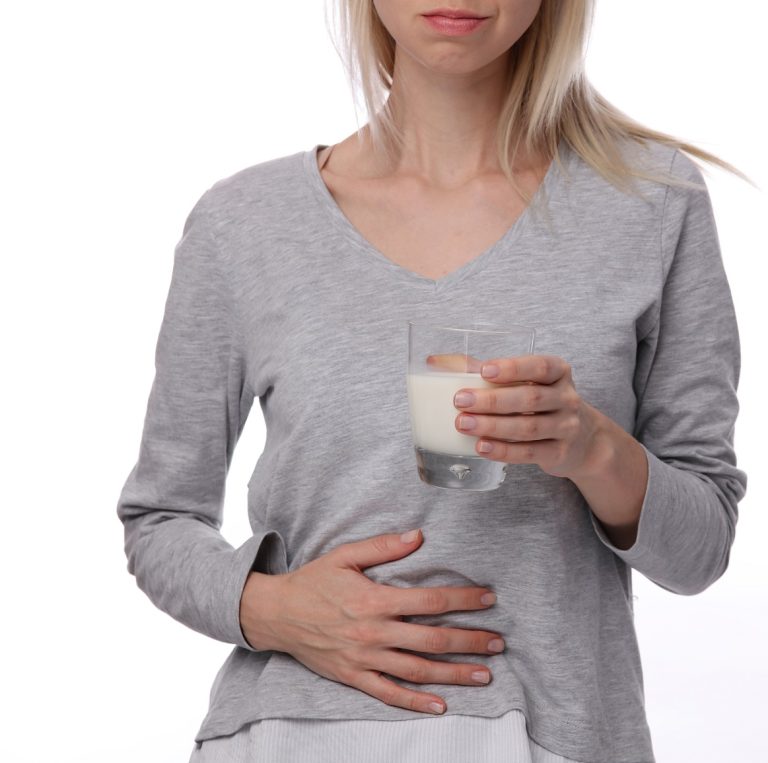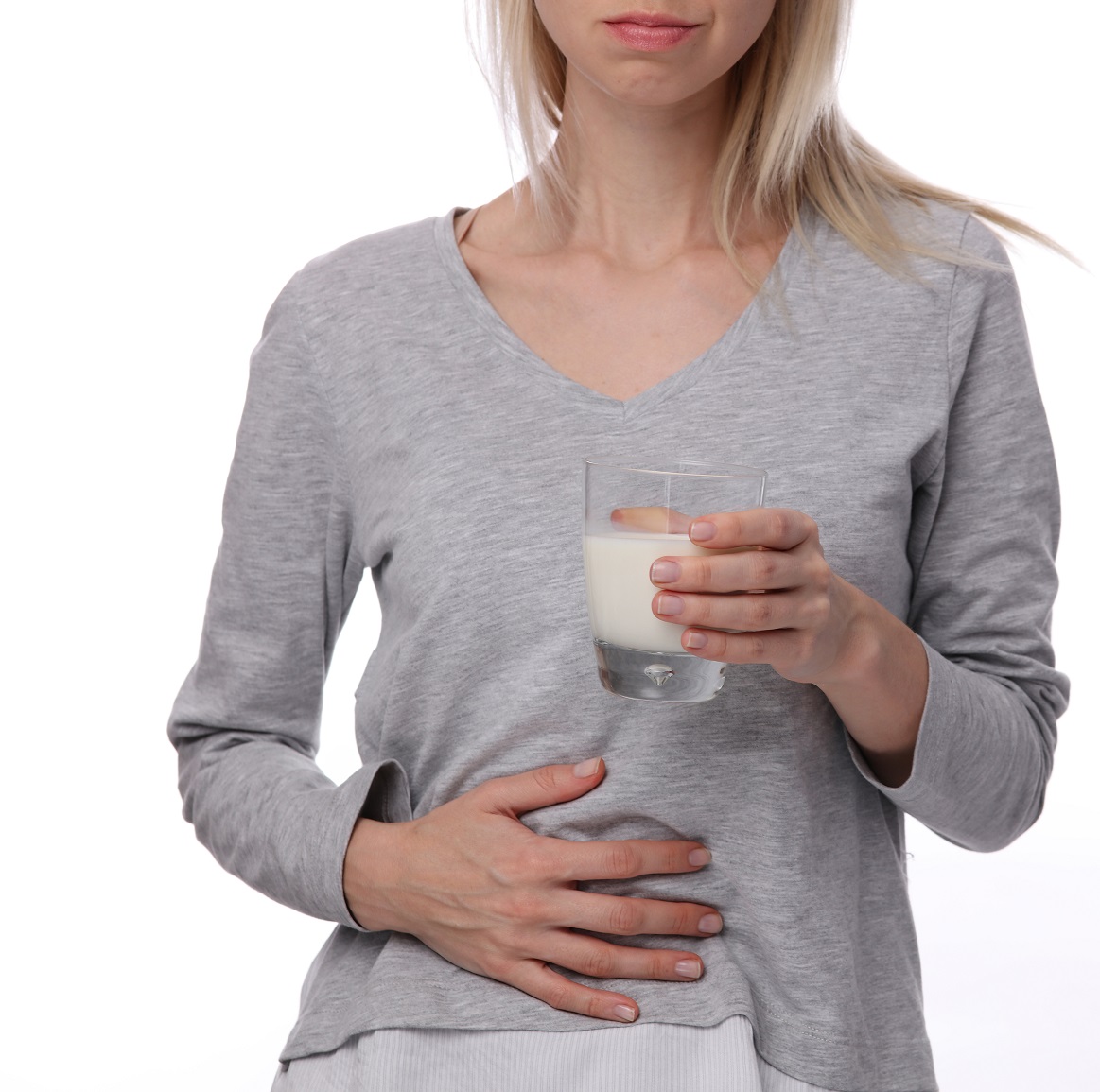- Conventional medicine has long insisted that inclusion of milk and dairy products is a vital part of a healthy daily diet, particularly to provide adequate levels of calcium and vitamin D, yet other sources may provide a better dietary foundation for health and strong bones without the chemicals, antibiotics, white blood cells and hormones that show up in standard pasteurized cow’s milk.
- Most of the world’s adult population is lactose intolerant, meaning that they lack the enzyme lactase that is needed to digest the milk sugar lactose.
- Many infants and children are allergic to milk proteins as well. In addition to feeding issues, milk-protein allergies can predispose these children to vaccine reactions as many childhood vaccines contain casein, the primary protein found in dairy products.
Alone among mammals, only humans continue to drink milk into adulthood, and only humans purposely drink the milk of other mammals. As a rule, adult humans don’t drink human milk but continue to consume milk and dairy products made from the milk of other species.
Traditionally, nutritionists have strongly recommended dairy foods as a crucial part of a balanced diet, from stressing the benefits of exclusively breastfeeding infants human milk,1 to providing guidelines for daily consumption of dairy foods for children and adults.2 Even as the latest version of the Dietary Guidelines for Americans (DGA)3 moves away from the familiar “food pyramid” to take a more personalized approach to diet that embraces personal and cultural differences, dairy remains a cornerstone of their key recommendations for a healthy eating pattern.4
In promoting the need for milk and dairy products for a balanced diet, nutritionists are primarily touting their supposedly critical importance in establishing adequate calcium and vitamin D levels. According to well-respected researcher Robert P. Heaney, MD, health care providers need to understand that, “calcium is a crucial part of dietary adequacy and that it is difficult to achieve that adequacy for most of their patients if dairy foods are not consumed in adequate quantity.”5
Milk and dairy foods are particularly encouraged for the elderly, ostensibly to provide adequate levels of calcium and vitamin D (to prevent broken bones), as well as protein and glutathione production (for general health) that seniors may not get otherwise.6 In fact, reimbursement for meals served through U.S. Department of Agriculture (USDA) congregate food programs requires that milk be served at two meals and yogurt or another dairy option be provided at the third meal and the daily snack.7
Dairy Sensitivities Prevail
Conventional science assumes that including milk and dairy in our daily diet is a good thing. Yet, the majority of adults globally are lactose intolerant,8 and as many as 15 per cent of infants may be allergic to milk proteins as well.9
Nearly all infants and small children produce sufficient amounts of lactase, the enzyme that allows them to digest and use lactose (milk sugar), but 75 percent of human adults (and 25 percent of Americans) do not. The results of lactase deficiency include such digestive symptoms as flatulence, bloating, cramps, and diarrhea.
According to one report, “approximately 70 percent of African Americans, 90 percent of Asian Americans, 53 percent of Mexican Americans, and 74 percent of Native Americans were lactose intolerant,” and lactase activity was also found to be severely decreased in those with an African, Asian, Native American, Arab, Jewish, Hispanic, Italian, or Greek backgrounds. Only some with Northern European or Mediterranean heritage were found to retain any significant degree of lactase activity, suggesting a genetic mutation in these groups rather than a “norm.”10
In addition to the natural development of lactose intolerance with age, pasteurization has also played a role in humans’ inability to digest milk. Pasteurization destroys not only potentially harmful pathogens in milk but also the beneficial bacteria, vitamins and enzymes present in raw milk and changes the structure of the natural calcium, rendering it insoluble and essentially unusable for humans.11
In contrast to the enzyme deficiency associated with lactose intolerance, an allergy to milk proteins is an immune system reaction in which the body attacks the milk protein (either casein or whey) as a foreign invader. Among the most common of food allergies, cow’s milk protein allergies (CMPA) are most prevalent among children, especially newborns. Some have attributed the increased incidence of milk allergies to the common substitution of cow’s milk (in infant formula) for human breast milk.12 Symptoms of an allergic reaction to milk may include hives, upset stomach, vomiting, bloody stools and, in some cases, life-threatening anaphylactic shock.13
Although about 80 per cent of those with CMPA grow out of their sensitivity by age 16, it can present a serious feeding and health challenge for babies and small children. Even breastfeeding mothers of babies with CMPA may be warned to curtail consumption of dairy products to avoid a reaction in their sensitive infants.
The main protein present in milk is casein, a common ingredient in many childhood vaccines.14 Milk proteins in general are often used as stabilizers or emulsifiers in vaccines and some may include “hidden milk proteins” as well. As reported by Franceschini et al in the journal Clinical and Translational Medicine, “Anaphylactic reactions have been reported in milk and egg-allergic children after MMR vaccination.”15
Dairy Not the Best for Bone Health
While prevention of osteoporosis has been a major selling factor in trying to get older people (women in particular) to increase their milk intake, evidence does not support the recommendation. Comparatively speaking, the fracture rate is much lower in countries such as Japan, India, and Peru, where calcium intake is generally much lower than it is in the U.S.16
Many factors can affect bone integrity, including genetics, diet, and lifestyle factors like smoking and alcohol intake. Preliminary findings have even suggested that excess consumption of milk may be associated with an increased risk of broken bones—as well as heart disease, cancer, and death—among older women.17
Calorie for calorie, milk is not even among the best sources for dietary calcium. As Joseph Mercola, DO explains, “milk” and “calcium” are “often used interchangeably in the popular press… [but] no standard other than that of the National Dairy Council considers it the best calcium source.” Other good dietary sources of calcium include dark-green leafy vegetables like spinach, kale, and vegetable greens; dry beans; sesame seeds and almonds; oily fish like salmon and sardines; rhubarb; and okra, among others.18
Not All Milk Is Created Equal
As the prevalence of lactose intolerance becomes more widely recognized, people are turning to alternatives to cows’ milk for their dairy fix. In recent years, such substitutes as nut milks, soymilk, hemp milk and rice milk have found a strong market.
Even among animal milks, not all milks are the same. Many people who cannot tolerate cows’ milk are able to drink goats’ milk without trouble. That’s because the fat globules in goats’ milk are about a fifth of the size of those in cows’ milk, among other differences. Similarly, there are distinctive differences in the milk of other animals used by humans worldwide.
Americans may be fixated primarily on cow’s milk, but animals that provide milk for much of the rest of the world include the aforementioned goat as well as sheep, camel, yak, water buffalo, reindeer and elk. Fermented horse milk creates a mildly alcoholic beverage called kumis that is popular in some parts.19 For the adventurous, several non-bovine dairy products are beginning to be available in the United States.20 Choices may become more urgently sought after as questions are surface about the integrity of the commercial dairy industry.
Pus in Milk
The idea that there is pus in our milk supply would make just about anyone pause before drinking, which is why the idea has taken hold with many “anti-milk” groups. Many claim that the USDA “allows 135 million pus cells in a glass of milk.” Pus, however, is not actually a type of cell at all but a mixture of dead white blood cells, bacteria and dead skin cells. What are being referred to as “pus cells” are somatic cell counts (SCC), which measure the number of white blood cells—a natural byproduct of any animal-based food—in the milk. The USDA allowance for somatic cells amounts up to 750,000 cells/mL, though the national average reported in 2014 was much lower at 206,500 cells/mL.21
According to one dairy farmer defending the integrity of the dairy industry, “Dairy farmers are paid more money for milk that has a low SCC, if our cell count rises above normal levels they will dock the amount we get paid for our milk, if it rises even higher they stop taking our milk and we can’t sell it. So not only do we not want our cows to be sick, it would cost us a lot of money and could cost us our farms if we were to ignore a high SCC.”22
However, while it may be true that white blood cells aren’t an unusual presence in animal products, it is also true that they represent the immune system’s “fighter cells” and their presence may indicate the possibility of infection, so the pus idea isn’t totally out of left field.
What Else Is in Our Milk Supply?
It has been reported that as many as 20 different chemicals including painkillers, antibiotics and hormones were found in samples of milk from Spain and Morocco.23 24 The researchers found that many drugs used to treat illnesses in animals and people turned up in their study, which looked at cow, goat and human breast milk samples and found the greatest contamination in the milk from cows. Saying that the “results highlight how man-made chemicals are now found throughout the food chain,” they surmised that some of the chemicals had been fed to the cows and some had entered the milk supply through contamination on the farm.25
The bottom line is that if you like milk and dairy products, and your system is not upset by them, conventional medical wisdom would say you are doing your body good. However, if milk is not on your dietary must-have list, there are plenty of alternatives for staying healthy and keeping bones strong that are less recognized or disregarded by conventional science.
References:
1 World Health Organization. Exclusive Breastfeeding. WHO.int.
2 Heaney RP. Dairy Intake, Dietary Adequacy, and Lactose Intolerance. Advances in Nutrition March 2013.
3 U.S. Department of Health and Human Services and U.S. Department of Agriculture. 2015-2020 Dietary Guidelines for Americans. 8th Edition. Health.gov December 2015.
4 Executive Summary: Dietary Guidelines 2015-1020. Health.gov. December 2015.
5 See Footnote 2.
6 Dairy Intake Is Associated With Brain Glutathione Concentration in Older Adults. Am J Clin Nutr February 2015.
7 U.S. Department of Agriculture. Child and Adult Care Food Program (CACFP). Food and Nutrition Service Oct. 6, 2017.
8 What is Lactose Intolerance? Physicians Committee for Responsible Medicine Aug. 15, 2011.
9 Brill MD. Approach to Milk Protein Allergy in Infants. Can Fam Physician September 2008.
10 See Footnote 8.
11 Mercola J. The Milk Myth: What Your Body Really Needs. Mercola.com July 18, 2009.
12 Rangel AHDH, Sales DC et al. Lactose intolerance and cow’s milk protein allergy. Food Science and Technology Jan. 19, 2016.
13 American College of Allergy, Asthma & Immunology. Milk and Dairy Allergy.
14 U.S. Centers for Disease Control and Prevention. Vaccine Excipients & Media Summary: Excipients Included in U.S. Vaccines, by Vaccine. CDC.gov Jan 6, 2017.
15 Franceschini F, et al. Vaccination in Children With Allergy to Non Actie Vaccine Components. Clinical and Translational Medicine Feb. 14, 2015.
16 Ware M. Health Benefits and Risks of Consuming Milk. Medical News Today Dec. 19, 2017.
17 Thompson D. Is Milk Your Friend or Foe? WebMD Oct. 29, 2014.
18 See Footnote 10.
19 Phelan B. Others’ Milk. Slate July 24, 2012.
20 O’Connell R. 10 Non-Cow Milk Products You Can Try. Mental Floss Jan. 5, 2016.
21 Animal and Plant Health Inspection Service. NAHMS Dairy Studies. U.S. Department of Agriculture July 7, 2017.
22 Is There Pus in Milk? Dairy Carrie Mar. 5, 2013.
23 Derbyshire D. It’s Not all White: The Cocktail of up to 20 Chemicals in a Glass of Milk. Daily Mail July 7, 2011.
24 Mercola J. Who Knew this Cocktail of up to 20 Chemicals Was in Your Glass of Milk? Mercola.com July 26, 2011.
25 See Footnote 18.















14 Responses
For 20 years I was unable to drink milk due to lactose intolerance, until I was introduced to raw milk (both cow and goat). At first, I didn’t believe my friends who kept urging me to try it… after about 6 months of being bugged to try, I decided I’d prove them wrong. So I drank a big cup of raw milk, expecting to get sick.
But I didn’t get sick.
Next day, I did an experiment: I drank half a cup of raw milk and then ate a big slice of pizza that would normally cause me a problem (unless i took 3 lactaid pills). No problem with the normally impossible to eat pizza!
So by drinking raw milk, I can eat anything milk-based now. I never would have thought this possible had I not tried it myself.
Probably the best thing about the raw milk is that it tastes SO MUCH better than store-bought milk: it’s fresh, rich, creamy.
If you are looking for more info about raw milk, check out the Weston A Price Foundation (westonaprice.org)
Thank you for providing this article! Two additional issues that could be added to this are:
1) Another protein in milk, called Bovine Serum Albumen (BSA) has been strongly implicated in the initiation of Type of I Diabetes (T1D.) Apparently in those with a genetic predisposition to T1D, BSA triggers an immune response that cross reacts with antigens on the surface of pancreatic cells, thus triggering the autoimmune reaction that destroys the pancreas and causes T1D. Evidence from many sources suggests that in families predisposed to T1D, NEVER exposing children to dairy products (including mother not consuming them while pregnant) might prevent Diabetes from ever occurring.
2) Evidence from the book The China Study, By T Colin Campbell, describes not only from Campbell’s study one the largest, longest studies of diet and health ever conducted, but which also summarizes dozens of other relevant studies that support his findings, actually suggested that dairy proteins when present accelerate cancer growth, while their absence can in some cases, “turn it off.” Be aware, however, that Dr. Campbell’s work has the been the subject of some very concerted attempts to discredit him — similar to how moneyed interests have attempted to discredit Andrew Wakefield’s work — so don’t believe the lies about The China Study when they surface — look deeper. Dean Ornish’es work too showed that the presence or absence of dairy was linked with the growth rate of existing prostate cancers in men. He also showed that a plant-based diet could actually increase the length of our cell’s telomeres — previously thought to only get shorter with time. (Telomeres control lifespan of cells — when your telomeres are gone, cells can no longer reproduce).
One other thing —
The China Study compared people living in 65 different very rural areas of China — most of these areas consumed no dairy products at all, but a few of them did have cows, and thus were consuming small amounts of dairy — it is unlikely due to the local that any of it was pasteurized — and yet clearly even this small bit of dairy was linked with measurable increases on disease rates of the community.
No, but it’s cheap & better than modern peanut butter.
Blue Diamond CA almonds nearly choked out of business, years back (old TV ad: “please eat one bag a day”) until they realized they could make the fake almond ‘milk.’
Why is ‘ALMOND MILK’ SO OVERPRICED? The wife pointed out (joking): Because it’s so hard to milk the tiny almonds? Because folks are fools, or imagine the carb change is enough to help diabetics (notably the fraud of 95% are “Type 2 diabetics.”)
I laugh with the new great TV ad from the cow industry, “9 out of 10 Olympic monkeys drank milk.” Well, ONLY because the fake kinds weren’t invented, and USA was filled with wheat, corn and cows–and cows were never able to run away. It’s what’s advertised, for dinner (baloney).
{And yet we buy our chocolate and so on, not from this hemisphere, but from child-slave-labor Africa.}
What about a vaccine to protect us from California deaths?
OH, how could I forget: some of the most-dangerous, long-term, slow killers is dry boxed “breakfast” cereals, part of this balanced cancer.
OF COURSE THEY NEEDED MILK, whereas, tobacco did not.
Those companies were always minor robber barons, although they promoted farmers. But it was some of the earliest ultra-processing of what used to be food.
New study shows yummy cancer:
[http://www.bmj.com/content/360/bmj.k322]
I think we need to remember that humans are also the only species that eats their food cooked. Yet, it seems that some cooked foods have some benefits that we may have evolved to need or at least take advantage of.
Humans are also the only species that extracts oil (olive oil/coconut oil) from plants and it could be argued that some of these oils are beneficial and others are not or are actually harmful.
Also, we need to address the quality of cow’s milk. Raw milk from grassfed cows raised in a healthy way on nutrient rich grass is argued to be a completely different food from cows raised in confinement eating grains dowsed with glyphosate and other toxins. It has been shown that pathogenic e.coli can not survive in the guts of grass fed cows yet flourishes in the guts of grain fed ones.
Also, let us consider the option of goat milk, and the milk of other species (buffalo milk).
Moreover, if we ferment our milk into Kefir or yogurt, the lactose is consumed by the culture, and we elminate the problem of lactose intolerance.
Let’s think broadly here, and not ignore the work of Dr. Weston Price and others who found cultures who found ways of adapting milk to their needs. These cultures did not generally eat ungerminated grains either, and fermentation was an important part of their diet.
You make no mention between conventional milk and raw milk from cows that are BGH free and are fed hay. Also, there is a difference between the milk from Jersey and Holstein cows. Some people who are allergic to Holstein milk are not allergic to Jersey. And if you think you are getting enough vitamin D from milk then you are really wrong.
Agreed, William… raw milk is awesome and full of benefits…and the stuff they call, “Dairy or Milk” in the stores is not even real food…toxic waste…that accounts for the poor bodily response to ingestion…
In addition, conventional milk is made usualy with A1 cows, we should seek Raw or unprossessed milk from A2A2 cows. There is a farm in Florida i think its called “Full Circle Farms” that can expleain this a lot better than i can
Many commenters have picked up on the primary problem with this issue, being:
Conventional store bought milk = bad
Clean, grass fed milk = super food
The store-bought/over-processed vs. fresh/non-processed principle holds true for most all foods. Every person that I know who has agreed to try raw milk has had no digestion issues whatsoever.
We are the only species that drinks another species milk…Cows milk is meant for baby calves and not human babies…
Although this article and discussion have so far only covered health, there is an even bigger issue here that needs to be considered.
I am also a mother. In fact for 6 years I was a nursing mother.
When I see a mother cow with her baby, I see the same passionate attachment in that mother and her baby that I have with my own.
I would have considered it egregiously unjust if someone had told me I could not nurse my babies — and even then took them from me. Every time I see someone drink milk or eat cheese, I am reminded of this terrible injustice that we humans inflict upon millions of cow mothers every year. Within days of birth baby cows are ripped from their doting mothers. Most are also forcibly impregnated again and again. Losing each child again and again. Dairy is horrifically unjust.
Dairy, whether organic, grass-fed or raw, is still the product of exploitation of other mothers.
Please do the compassionate thing and ditch dairy.
Milk is the only food that isn’t toxic to an infant mammal.
People need to drink raw milk, which is full of beneficial microbes and enzymes which are imperative to immunity health and proper digestion. Homogenized milk is pressured at 83,000 # per square inch and causes the essential proteins our body derives from nice even ladder format into a twisted train wreck. Our body deserves better than damaged proteins. And pasteurization heats up the milk killing it. Healthy milk is living milk. All of human history ate raw milk. Mostly goat milk.
There are so many things in the world to worry about I’m not putting milk anywhere near the top of that list. Science changes all the time, one year “they” tell you a certain supplement or food is good for you and a few years later it’s not. I go based on what makes me feel good. If a food upsets my stomach I stay away. I don’t believe we all have to eat the same so called healthy way.